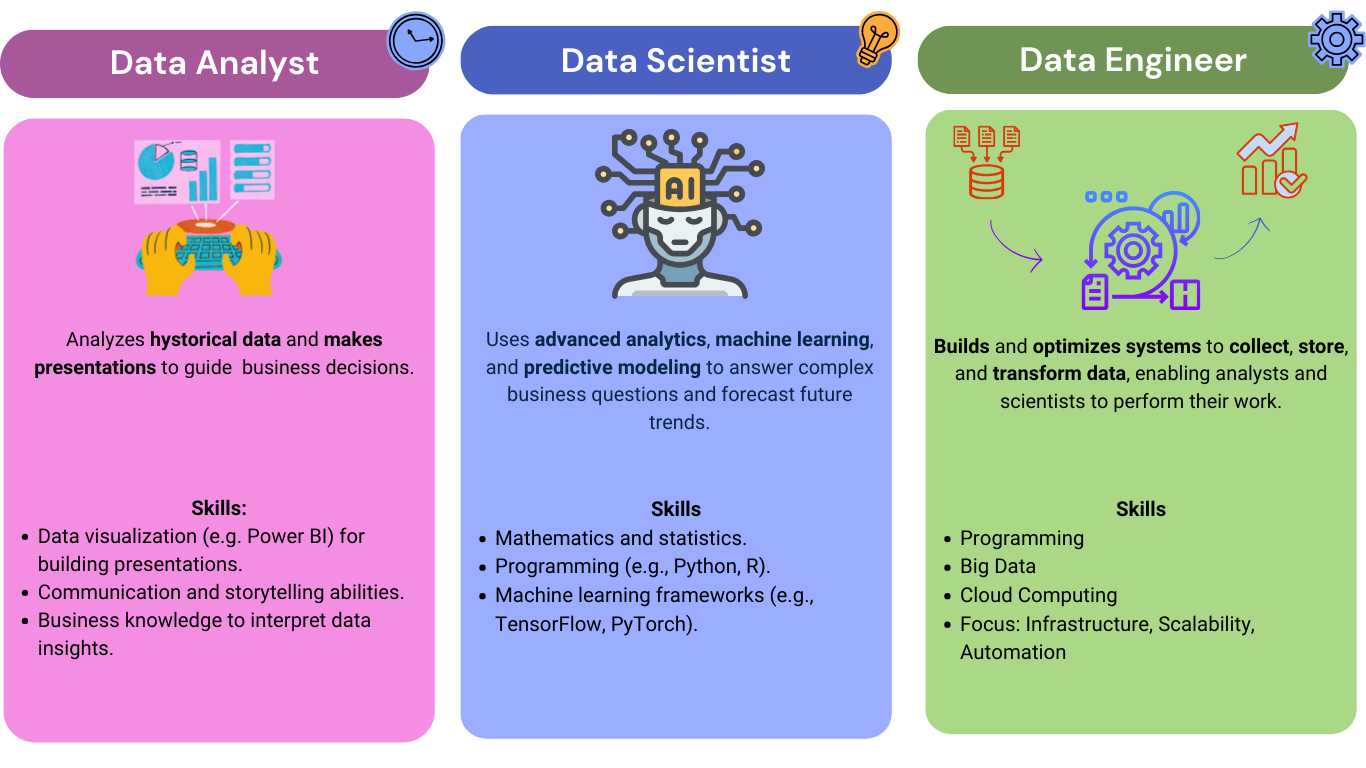Data Roles Explained

Starting Point: Why data roles are important
The data industry has grown quickly, creating different jobs for managing and analyzing data. Today, data is the foundation for AI technologies like recommendation systems, voice assistants, and self-driving cars. For example, companies like Netflix and Spotify use clean, well-organized data to suggest movies or music. Data analysts help make sense of this data, while data engineers build systems to store and manage it. These jobs all need specific skills to help businesses make better, data-driven decisions.
Data Engineer: The Infrastructure Builder
Data Engineers are the number one hire for a company to start working with data. This role is responsible for figuring out how to gather data, organize, maintain, and prepare for analysis. This is a vital role to have on a data team. Other data roles are dependent on the data engineer’s work in order to extract useful information from the data.
Primary responsibilities:
- Building and maintaining data pipelines
- Creating ETL processes
- Designing database schemas and data warehouses
- Ensuring data quality and accessibility
Data Analyst: The Business Interpreter
As already mentioned, data engineers are mostly responsible for operations before data is collected and sent to the analytical server. Then, data analysts get the preprocessed data, and explore it. They should be able to identify trends and patterns in the past data. This helps businesses identify “what was done wrong or could be done better”. Analysts should be proficient in creating visualizations or using tools like Power BI to build dashboards, effectively communicating their findings to stakeholders.
Primary responsibilities:
- Performing descriptive analytics
- Identifying trends and patterns in past data
- Creating comprehensive reports and dashboards
Data Scientist: The Insights Explorer
Like analysts, data scientists identify patterns and trends in data. What sets data scientists apart is their ability to apply machine learning techniques. By combining machine learning with other statistical methods, they move beyond descriptive analytics and into predictive analytics, forecasting future events or outcomes. While analysts focus on understanding the past, data scientists use data to predict what will happen next.
Primary responsibilities:
- Advanced statistical analysis and machine learning
- Predictive modeling and algorithm development
- Hypothesis testing and experimentation
Required Skills for Each Role
While each of these roles focuses on data, they have specific requirements. I'll share some skills to help you decide which role might be the best fit for you.

Final Thoughts
Understanding these roles is important for anyone looking to enter the data field. Choose the path that best aligns with your interests and capabilities – whether it's building data infrastructure, developing advanced analytical models, or translating data into business insights.